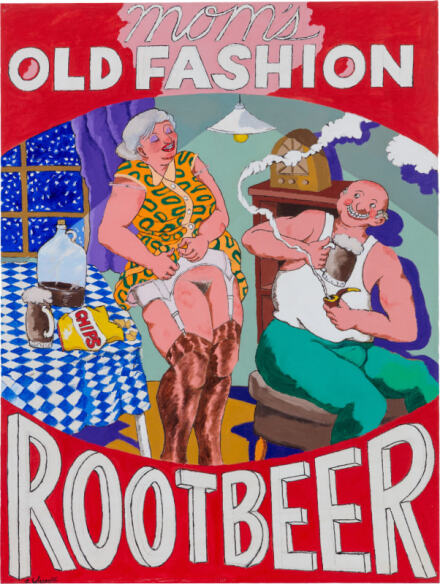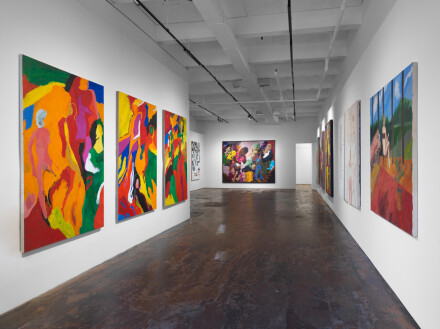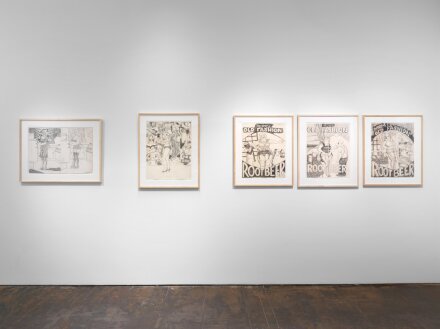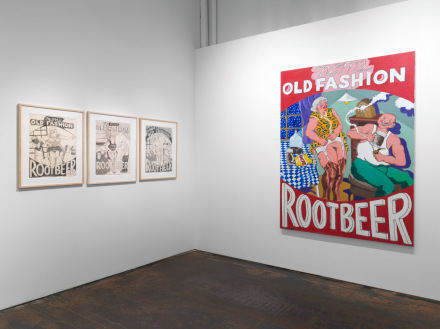
Robert Colescott, MOM’S OLD FASHION ROOT BEER (1974), via Venus Over Manhattan
On through the end of the week at Venus Over Manhattan’s downtown space, the gallery presents a body of works by painter Robert Colescott, organized to trace the development of the artist’s depictions of female subjects over the course of his sixty-year career. Serving as a coda to the recent, critically-lauded traveling museum retrospective Art and Race Matters: The Career of Robert Colescott, the show charts the evolution of Colescott’s ambitious practice through some thirty works produced between 1955 and 1996.

Robert Colescott, Women (Installation View), via Venus Over Manhattan
Organized in close collaboration with The Robert H. Colescott Separate Property Trust, Venus Over Manhattan’s exhibition is the first to trace the development of Colescott’s representations of women through major works from key moments in his career. Exploring Colescott’s work and use of both race and gender as points of tension through which broader cultural and social explorations and critiques can come to the surface, the works mix together sexual caricatures, comedy, art historical tropes and more, each twisting the works through kaleidoscopic relationships to both high art and pop.

Robert Colescott, Women (Installation View), via Venus Over Manhattan
Colescott’s paintings often exaggerate stereotypes within scenes from an unspecified past, highlighting the nostalgia that frequently contributes to their staying power. He spells this out in large, block letters in a painting and series of related works on paper titled MOM’S OLD FASHION ROOT BEER (1973–74), in which the titular, buxom, and white-haired “mom” serves mugs of foaming root beer while variously exposing herself to a series of Black and white children and white men. Rendered in Colescott’s crude, lurid style, the works connect the figure of a sexually benevolent mother with a nostalgia for the “good old days,” which Colescott further complicates through a series of permutations that exaggerate the racial dynamics of the period. Colescott cements the colorful, graphic style for which he became known in these works, marrying cartoon-like figuration with confrontational subject matter to deliver a “one-two punch.” In the mid-seventies, Colescott begins to figure more prominently as a subject in his own work. In Old Crow on the Fence (1978), he renders himself as an “Old Crow,” a multilayered character that simultaneously references the Old Crow brand of Kentucky Bourbon, the racist anthropomorphism of cartoon characters like Heckle and Jeckle, and the legacy of the Jim Crow era in the United States.

Robert Colescott, Women (Installation View), via Venus Over Manhattan
Throughout, Colescott’s work manages to both lampoon American culture and use it as a launching point for incisive commentary into constructions of desire and history, socialization and racial politics. Arranged here, the show is a rare look at the artist’s work in such density.
The show closes January 7th.
– D. Creahan
Read more:
Robert Colescott: Women [Exhibition Site]



